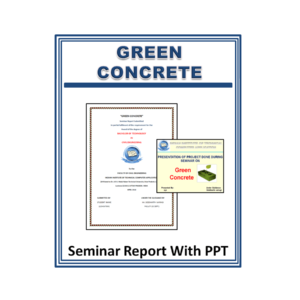Description
INTRODUCTION
Robotic actuators conventionally are pneumatic or hydraulic devices. They have many inherent disadvantages like low operational flexibility, high safety requirements, and high cost operational as well as constructional etc. The search for an actuator which would satisfy all these requirements ended in Air Muscles. They are easy to manufacture, low cost and can be integrated with human operations without any large scale safety requirements. Further more they offer extremely high power to weight ratio of about 400:1. As a comparison electric motors only offer a power ration of 16:1. Air Muscles are also called McKibben actuators named after the researcher who developed it.
Air Muscles Seminar Report
Page Length : 31
Content :
- Introduction
- History
- Construction
- Working
- Theoretical Model
- Estimation of Frictional Effects
- Dynamic Properties
- Specifications for a typical Air Muscle (the Shadow company)
- Differences from pneumatic cylinders
- Advantages of Air Muscles
- Disadvantages
- Applications
- Conclusion








Reviews
There are no reviews yet